
Introducing Light & Healthy Eggnog – this homemade, delicious, non-alcoholic eggnog can be enjoyed all season long without the guilt. Plus it’s non-dairy!
Five years ago, the notion I could make eggnog at home completely changed my life.
This meant no more waiting for the holidays to come around to enjoy a glass of eggnog.
This meant I could tweak the recipe and make my own favorite version.
This meant I could actually understand what the heck was in eggnog. It was such a mystery!
I didn’t realize then, but this also meant Dustin and the kiddos would always refer to the holidays as the time when “mom makes her eggnog.”
So, that’s why I wanted to share this non-alcoholic eggnog recipe.
And, to be honest, it’s pretty dang amazing.
BUT my original eggnog recipe was created before my clean eating days.
So, three years ago at Thanksgiving, I decided to try out a clean version of our family’s favorite eggnog and it was very good. Like shockingly good…and clean!
As Dustin would say, it was still “noggy.”
Wanna hear a really cool story?
So, on a super cool side note, since posting this eggnog recipe originally, I have received tons of emails and comments thanking me for sharing an eggnog recipe that can be enjoyed year round.
To my surprise, many people who no longer live in the United States have used my recipe to enjoy a eggnog, a nostalgic treat, since their current location doesn’t even know what eggnog is. They thought they’d never have it again and my recipe helped them enjoy an old favorite.
I mean. How flipping cool is that?
So, for those of you who do have access to eggnog, but who want to also enjoy a healthy, clean eating lifestyle and avoid any struggle with weight, I give you Light Eggnog.
It’s creamy. It’s smooth. It’s thick. It’s cinnamony and nutmegy. It’s freaking eggnog. Light. And without the alcohol.Yes, you can rejoice now.
HOW TO MAKE EGGNOGThis healthy non-alcoholic eggnog recipe is very easy and it involves just a few simple steps. To make the healthy homemade eggnog:
add almond milk, honey, egg yolks, cinnamon, and nutmeg in a blender and blend for approximately 1 minute or until smooth; pour the mixture from the blender into a saucepan and add cloves; cook the eggnog on medium heat for 10-15 minutes; once the eggnog thickened, add vanilla extract; use a fine mesh strainer to remove cloves; transfer the eggnog into an airtight container and place it in the fridge to chill for at least 6-8 hours or overnight. to make the eggnog even more cinnamony and nutmegy, sprinkle a little cinnamon and a little nutmeg before serving.OMG! This is eggnog bliss!
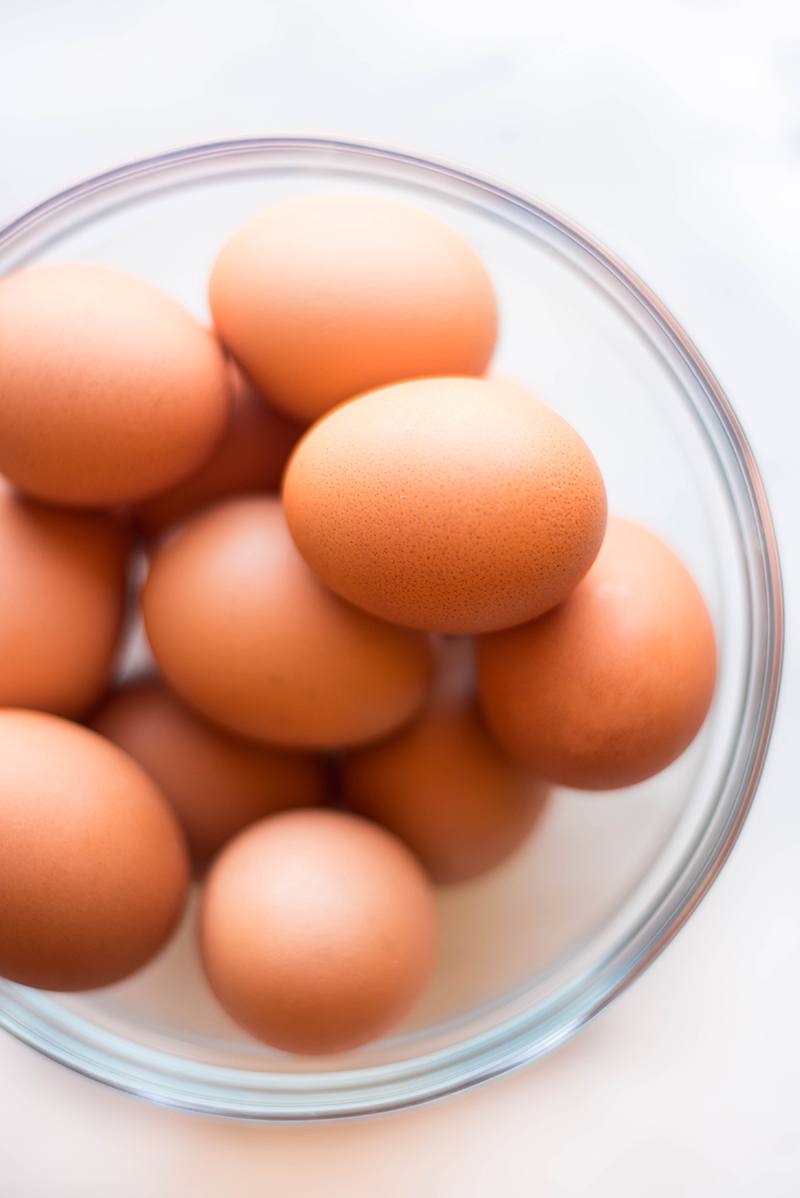
Wondering what is eggnog made of, traditionally (i.e. NOT how I make it)?
Well, egg yolks and milk are used to get the thick texture and egg whites are used to make it airy and frothy. Some like to add some heavy cream to get a creamy and rich texture. Traditionally, eggnog is made with raw eggs and alcohol and it’s aged for weeks. The alcohol serves as a preservative but also as a sterilizer since it kills any bacteria from the raw eggs.
Now, don’t get me wrong — I still like my eggnog creamy. That’s why I make this almond milk eggnog. Also, I prefer to cook the eggs for eggnog on the stove for safety reasons and because I make a non-alcoholic eggnog that my kids can enjoy as well.
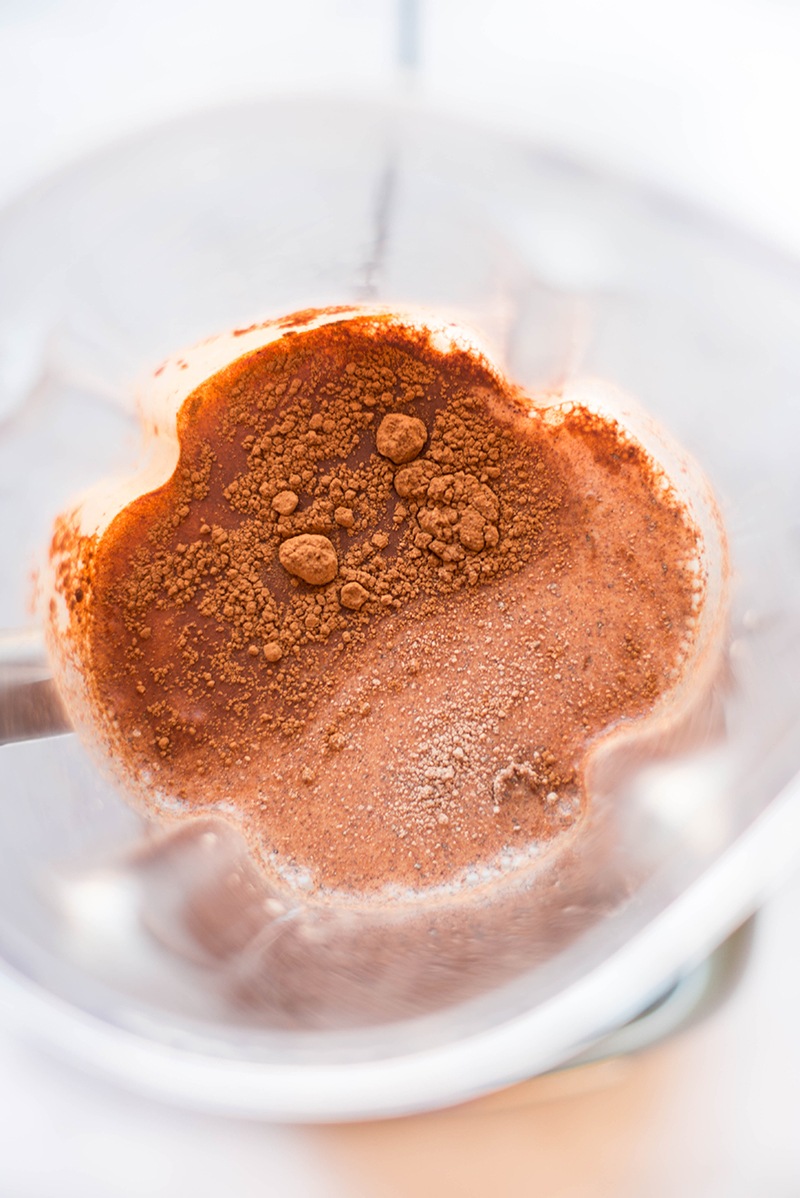
Eggnog is pretty loaded with refined sugar and heavy cream and sweetened condensed milk. Delicious? Yes. Clean? Not so much.
Is eggnog good for you? Not if you follow the traditional recipe.
But this light eggnog recipe is a different story.
How to make healthy eggnog:
replace full-fat milk with almond milk; add more almond milk and skip the sweetened condensed milk and heavy cream; use raw honey instead of sugar.Making almond milk eggnog is the easiest way to make healthy eggnog. And a delicious way too.
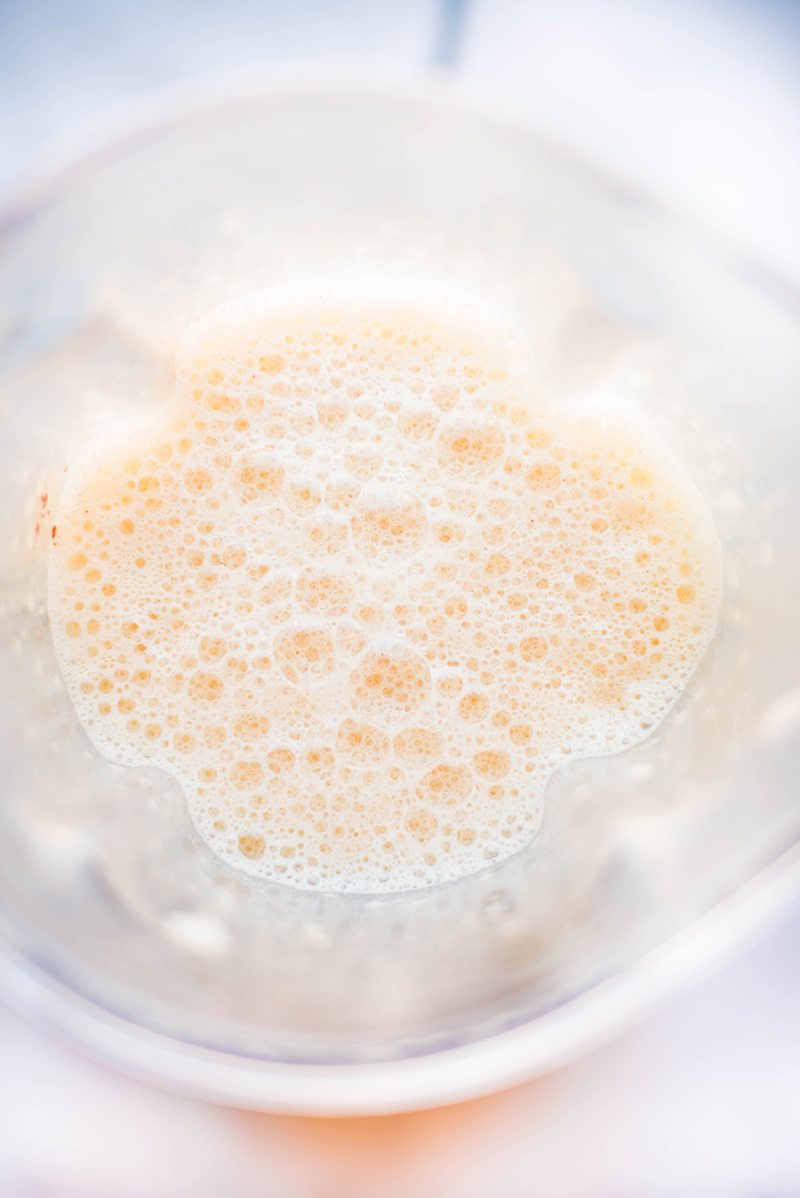
I already mentioned that I prefer to cook the eggs for the eggnog so that means I make eggnog on the stove. You already know the steps but here are some extra tips to make sure that our eggnog will turn out perfect:
Cook the eggs slowly until they start to thicken. At first, the mixture will be frothy but then it will start to thicken so don’t worry. You want the mixture to get hot but you don’t want it to boil or simmer. If the mixture starts boiling, remove from the heat temporarily. Then continue cooking until the eggnog thickened. WHAT LIQUOR GOES IN EGGNOGIf you want to transform this non-alcoholic eggnog into an alcoholic eggnog, you’re probably wondering what liquor goes in eggnog.
Brown liquors are the best for eggnog so try:
bourbon; brandy; rum.If you choose to make an alcoholic version, add the alcohol in the egg yolk mixture and continue with the steps as listed in the recipe.
HOW LONG DOES EGGNOG LAST?This non-alcoholic eggnog lasts for 3-4 days in the fridge if stored properly in an airtight container.
You can also freeze eggnog and store it in the freezer for up to 6 months, though this will cause a little change in the creamy texture.
Told you this eggnog can be enjoyed all year round! <— LOVE
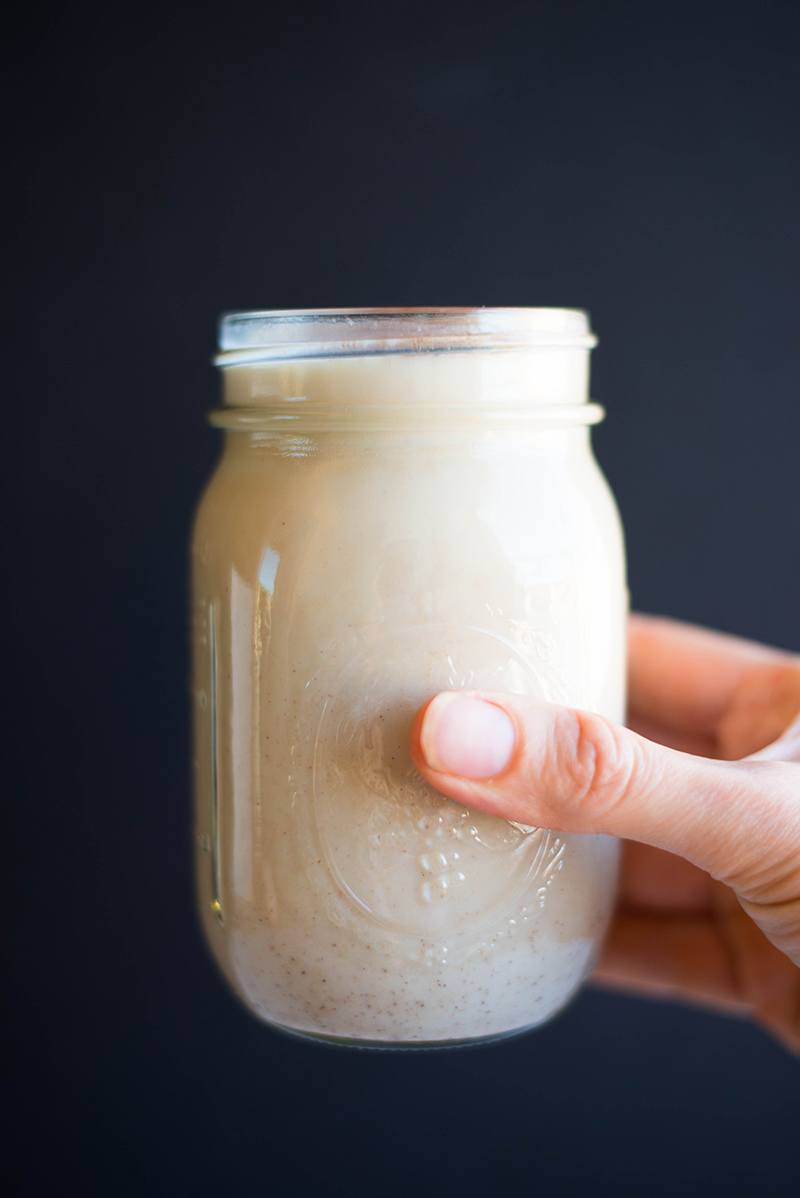 MORE HEALTHY HOLIDAY DRINK RECIPES
MORE HEALTHY HOLIDAY DRINK RECIPES
When creating a healthy holiday menu, people often tend to forget about their drinks. But drinks mean many extra calories and tons of ingredients that are not clean and healthy if you do not pay attention to them. So you most definitely have to make your drinks healthier too if you want to maintain your clean lifestyle. I want to help you so, besides this yummy eggnog, I have two other healthy holiday drink recipes for you.
HOW TO MAKE HOT CHOCOLATE MIXThere’s no Fall or Winter without hot chocolate in my house. Not to worry though, my hot chocolate is always healthy. And I can teach you How to Make Hot Chocolate Mix from scratch. Your kids will love the hot chocolate and so will you.
This homemade hot chocolate mix is paleo, gluten-free, clean eating, and it can be easily made vegan. Besides milk, my hot chocolate mix contains unsweetened cocoa powder, cinnamon, coconut sugar, sea salt, and vanilla powder. Sounds yum, right? Get the recipe.
HOMEMADE HEALTHY PUMPKIN SPICE LATTE RECIPEAnother drink I love during this time of the year is pumpkin spice latte. But you guessed it, I make it at home and it’s healthy. Homemade Healthy Pumpkin Spice Latte Recipe? Yes, please!
This pumpkin spice latte is very easy to make. Plus you can adjust the spices to fit your taste and make your taste buds dance from joy. Get the recipe.
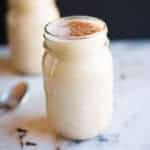
Introducing Light and Healthy Non-Alcoholic Eggnog without the guilt (and you can have it all year round!). Yes, you can rejoice now!
This post contains affiliate links for products I use regularly and highly recommend.
The post Light & Healthy Non-Alcoholic Eggnog (Non-Dairy!) appeared first on A Sweet Pea Chef.
Wondering how to make bibimbap? This vegetarian dolsot bibimbap is as good as restaurant style, using a cast iron skillet instead of a dolsot pan.

This recipe was reprinted with permission from A Common Table by Cynthia Chen McTernan.
“If I ever had to choose one meal to eat for the rest of my life, bibimbap would be it.” That’s Cynthia Chen McTernan in her new book A Common Table. And we couldn’t agree more. Dolsot bibimbap is one of those recipes I’d choose for my last meal. Alex and I first had dolsot bibimbap at a Korean restaurant here in Indianapolis, in steaming hot stone bowls. The combination of savory veggies, dippy egg and crispy rice was out of this world, and we’ve been hooked ever since. Want to learn how to make bibimbap at home? Here’s Cynthia’s recipe: it’s was a huge hit at our house!

Cynthia is the author behind the food blog Two Red Bowls, where she shares recipes and life as a lawyer and mama of a toddler boy (and another little one on the way!). Cynthia’s recipes and food photography are some of the most beautiful out there, so we were stoked to hear she’d be writing a book! And the book? Well, the book, A Common Table, is incredible. Her photos elegantly capture the inventive food, and her recipes? Well, let’s just say this dolsot bibimbap quickly rose to a fan favorite in our house! Here’s an exclusive Q&A with Cynthia about the book!
Your book is called A Common Table: can you explain what this means?Cynthia: At its heart the book is a representation of my little family and the things that make us who we are–so the “Common Table” is an intersection between my Chinese background and my childhood in the South, my husband’s Korean-Irish heritage and his childhood in Hawaii, and the places we’ve been since we met and began a family together. I wanted to put together a collection of our staples and favorite dishes from each of these cuisines, but also something that shows how they have more in common than first appears, and how experimenting with the flavors of each of them can also create something new, too.
A description of your book says that “the food we make and eat is rarely the product of one culture or moment, but is richly interwoven.” What’s an example of this?Cynthia: One dish that I find that has a really complex and interesting background is shakshuka. Not only are there are iterations all across the Middle East, there’s its Italian cousin, eggs in purgatory (which I play with a bit in the book!) and the same basic combination crops up in other places, too, like in huevos rancheros and even in Chinese scrambled eggs and tomatoes. It is crazy to think that when I sit down at a restaurant and order a dish like shakshuka, what arrives before me is something that often has such a storied history that I can’t begin to comprehend and that is so much wider than even the country I’m in–but that it also has something in common with other cultures it didn’t even come from.
You mention if you could eat one food forever it would be dolsot bibimbap. What makes dolsot bibimbap so special to you?Cynthia: I have really fond memories of bibimbap because it’s one of the first dishes my mother-in-law taught me how to make when I met my husband. But really I just love that I can never be bored with it. It’s so balanced–it has all sorts of veggies, a grain, a protein, but all kinds of textures and flavors, too. There’s sweetness from the carrots and onions and the bulgogi marinade, savoriness from the beef and egg and nori, that smoky-sweet spice from the gochujang and the crunch if you make it dolsot-style. (Plus, I love that it’s pretty much made for a party where you can mix and match what you put in!)
Thank you Cynthia, for sharing the recipes from your shared cultures with the world!
 What is dolsot bibimbap?
What is dolsot bibimbap?
Bibimbap is a Korean rice dish: it’s a bowl of warm white rice topped seasoned vegetables and gochujang, Korean chili pepper paste. Often it’s topped with a fried egg. The dish is stirred together just before eating it, so that you can enjoy all the flavors together with the sauce of the runny egg yolk. So what’s dolsot bibimbap? If you order bibimbap “dolsot” style, the dolsot refers to a hot stone bowl that the bibimbap is served it. The dolsot makes the rice crispy, and elevates the entire dish to a whole new level. If I order bibimbap and dolsot bibimbap is an option, I always order the dolsot version!
How to make bibimbapAlex and I assumed we’d have to have a dolsot pan to make dolsot bibimbap at home. Wrong! With Cynthia’s recipe from A Common Table, you can use a cast iron skillet to make the rice crispy! This was game changing for us. This recipe is incredible! It was so delicious that we immediately made it again for a dinner party. And as Cynthia noted above, it’s perfect for a dinner party since it’s so customizable. We made this recipe as a vegetarian bibimbap, since we mainly eat vegetarian. The recipe in her book also includes her beef bulgogi.
It takes a bit of time to sautee all the vegetables and crisp up the rice in this dolsot bibimbap recipe, but everything is pretty simple to whip up. One item of note: make sure to find gochujang at your grocery! It’s absolutely necessary to get that signature flavor. We’ve added the recipe for Cynthia’s gochujang sauce below: using gochujang, honey, soy, and toasted sesame seeds. Making the gochujang sauce makes it easier to drizzle over the entire bowl, but to shortcut some time you can simply add a dollop of gochujang itself (it’s just a little spicier that way!).

Order A Common Table by Cynthia Chen McTernan here!
*Note: This book is not 100% vegetarian or vegan, though it includes these types of recipes.
This dolsot bibimbap a delicious vegetarian recipe that’s perfect for a dinner party! Here are a few more dinner party recipes on A Couple Cooks:
Italian CalzonesLentil Stuffed Sweet PotatoesVegetarian Shepherd’s PieVery Veggie Vegan PizzaHomemade Ricotta Gnocchi RecipeBest Vegetarian Meatloaf This recipe is…
This recipe is…
This dolsot bibimbap recipe is vegetarian and gluten free.
Print
Wondering how to make bibimbap? This vegetarian dolsot bibimbap is as good as restaurant style, using a cast iron skillet instead of a dolsot pan.
For the dolso bibimbap
4 to 6 tablespoons vegetable oil (we used grapeseed) 2 cups julienned carrots (about 4 medium carrots) 2 cups julienned zucchini (2 to 4 zucchini) 2 cups thinly sliced onions (1 to 2 onions) 2 cups thinly sliced shiitake mushrooms Salt and black pepper, to taste 1 teaspoon soy sauce, or more to taste 3 to 4 teaspoons toasted sesame seeds, divided 5 to 6 cups packed torn spinach leaves 1 tablespoon minced garlic 2 to 3 cloves) 2 to 4 tablespoons sesame oil, divided 8 to 10 cups cooked rice 4 to 6 large eggs (1 per person) Shredded roasted seaweed (nori), for serving Gochujang or gochujang sauce, for servingFor the gochujang sauce (optional)
1/2 cup gochujang 2 tablespoons sesame oil 2 tablespoons soy sauce 2 tablespoons honey 1 tablespoon toasted sesame seedsTo cook the vegetables, saute each type separately: In a large nonstick skillet, heat a tablespoon or so vegetable oil over medium high heat. Add the vegetable, then season generously with salt and pepper and cook, stirring, until tender. Carrots will take about 3 to 4 minutes, zucchini 1 to 2 minutes, onions 5 to 7 minutes, and mushrooms 5 to 7 minutes. You can add a touch of soy sauce to the mushrooms, if you like. When each vegetable is done, remove and sprinkle with 1 to teaspoons sesame seeds, then set aside.
Boil water in a teapot. Place the spinach in a colander and pour the water over the spinach until bright green and soft. Immediately drain and rinse to stop the cooking, then toss the spinach with 1 tablespoon garlic, 1 to 2 tablespoons sesame oil, 2 teaspoons sesame seeds, 1 teaspoon soy sauce, salt and pepper. Taste and adjust seasonings as needed. Set aside.
Finally, in a large cast-iron skillet, heat 1 to 2 tablespoons sesame oil over low. When the oil is hot, add the rice to the skillet and spread gently into an even layer. Cook, without stirring, for about 15 minutes, letting the rice crackle very gently, until the bottom layer of rice form a golden, crisp crust.
If desired, mix together the gochujang sauce (you can also serve with just gochujang, but we enjoyed it with the sauce!). If necessary, thin out the sauce with a bit of water (our gochujang was pretty thin, so we didn’t need to do this step).
Fry the eggs: in a medium nonstick skillet, heat 1 tablespoon vegetable oil over medium low heat. Crack the eggs gently into the skillet and cook, without moving them, until the whites are set and opaque, 1 to 2 minutes.
Divide the rice between 6 large, shallow bowls, followed by the vegetables, eggs, and a handful of roasted seaweed on top. Serve with gochujang sauce (or gochujang) on top or on the side.
Keywords: Dolsot Bibimbap, Bibimbap Recipe, Korean, Vegetarian Bibimbap, Dolsot Pan, How to Make Bibimbap, Vegetarian, Gluten Free
A Couple Cooks - Recipes for Healthy & Whole Living
from Merah Hati Cintaku https://ift.tt/2AnXXOC
via MerahHatiCintaku.blogspot.com
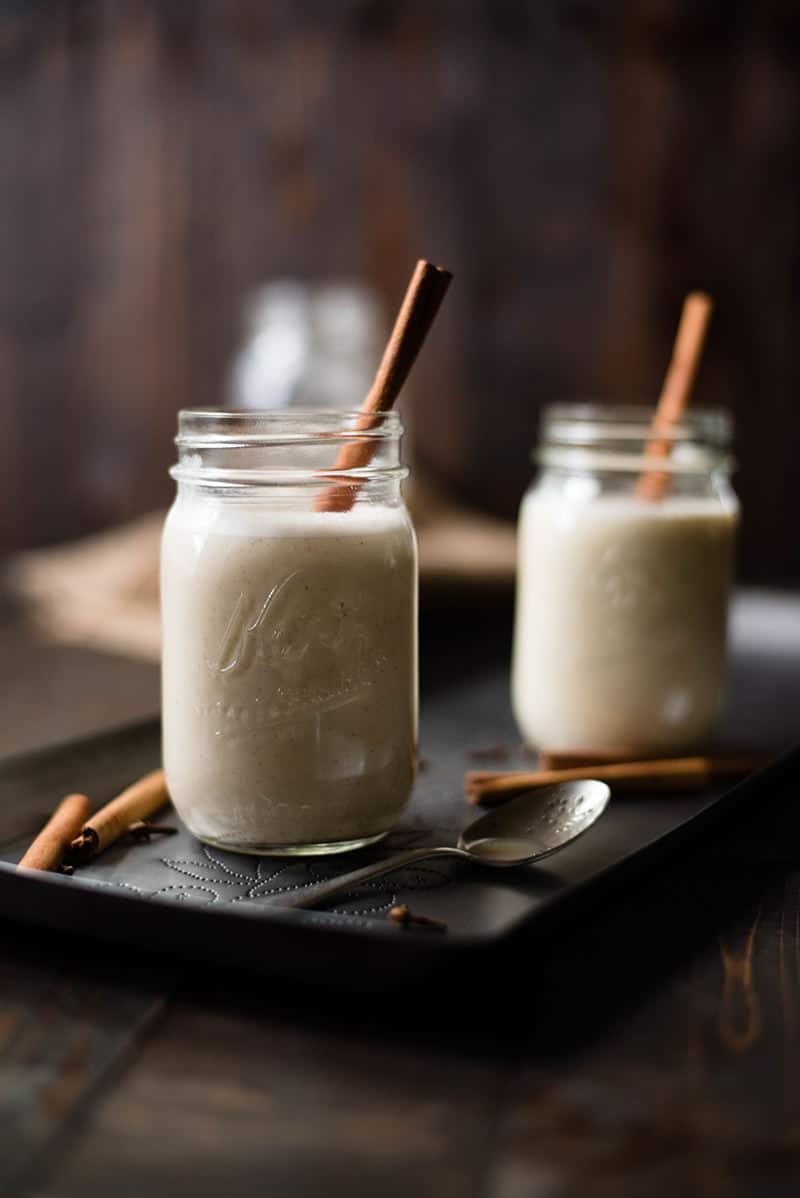
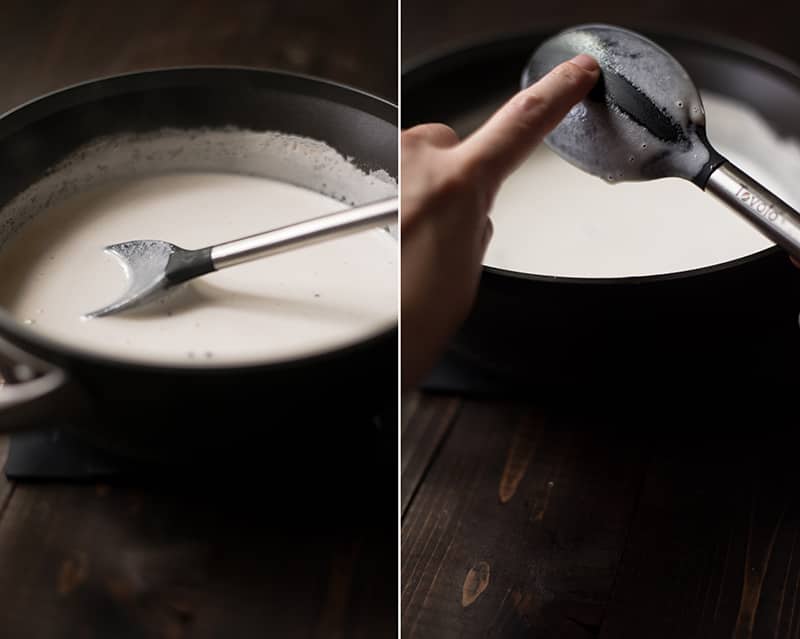
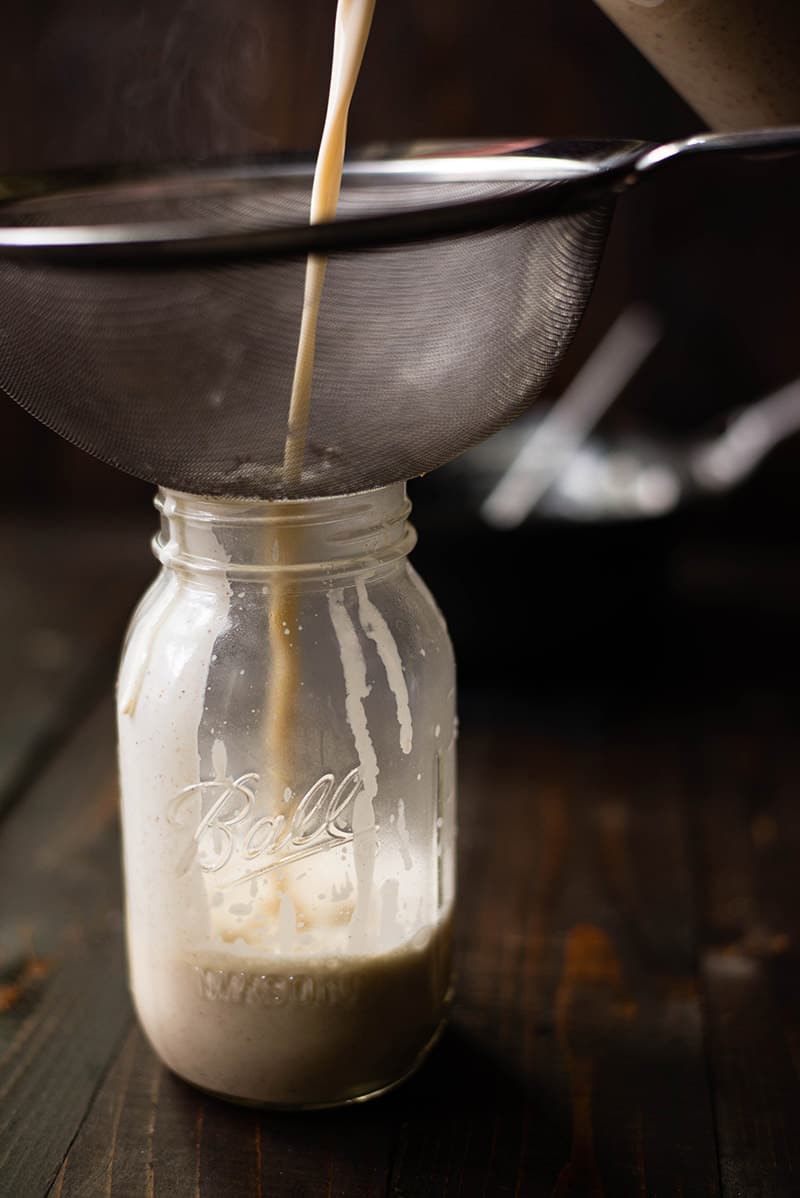
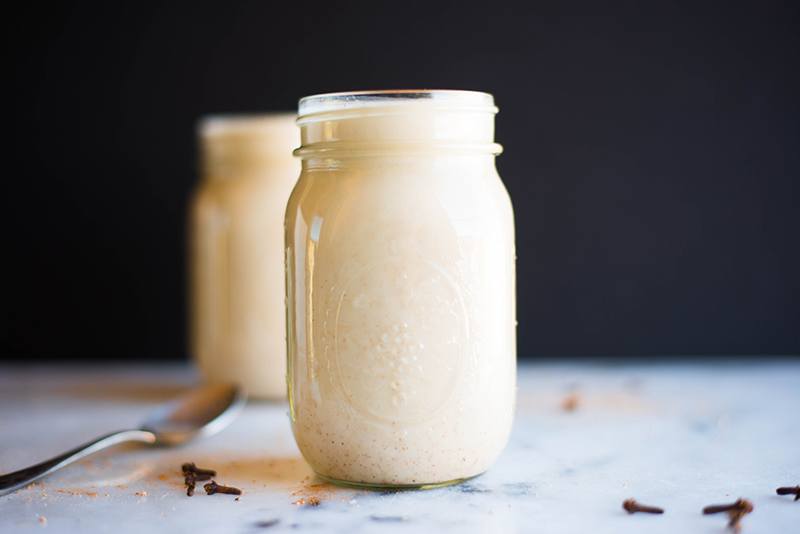
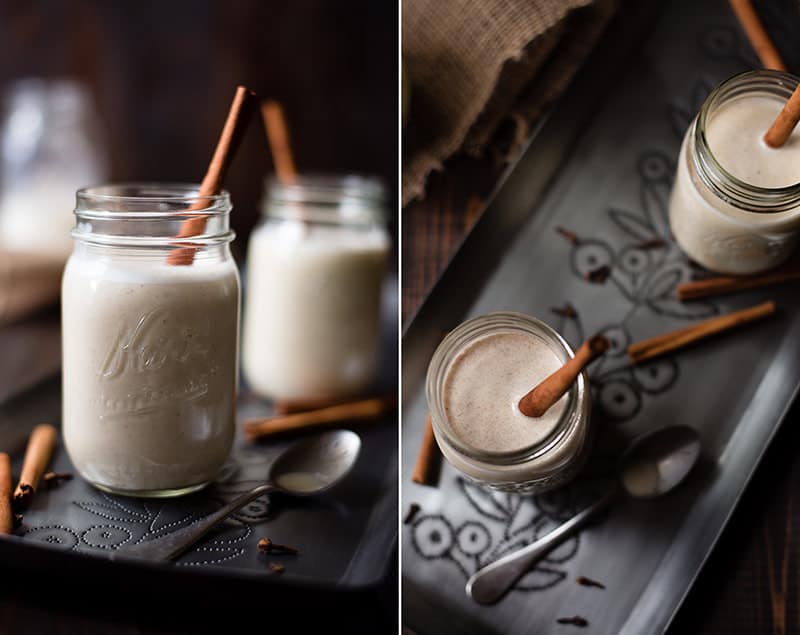
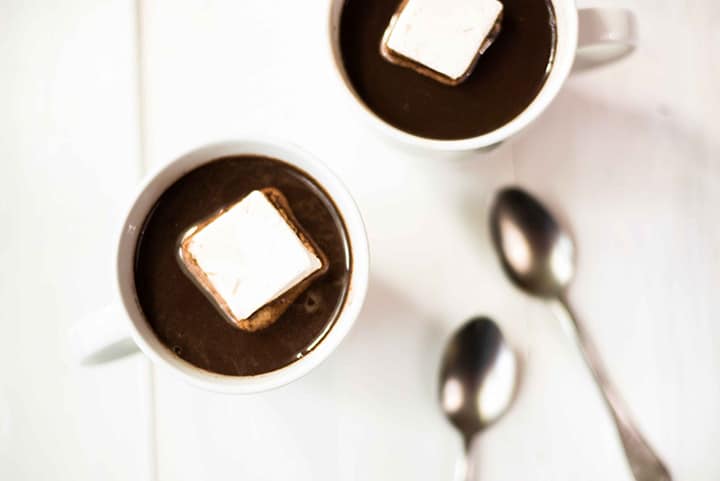
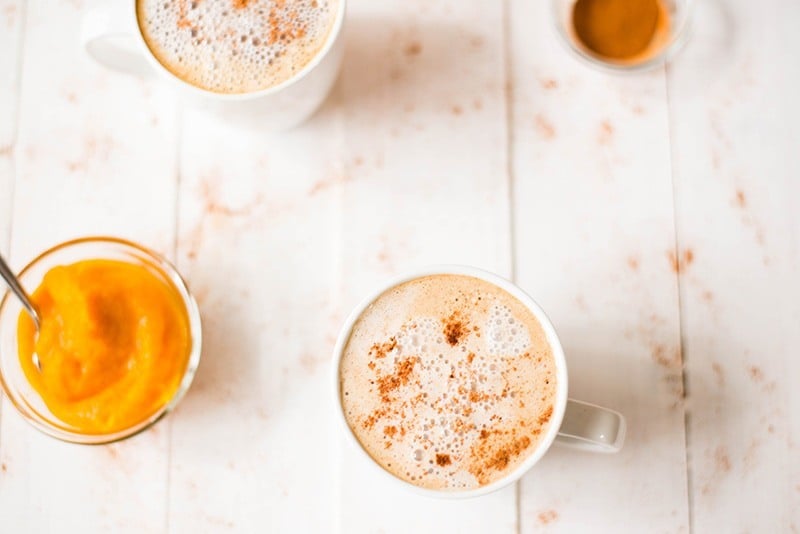
 (1 votes, average: 5.00 out of 1)
(1 votes, average: 5.00 out of 1)